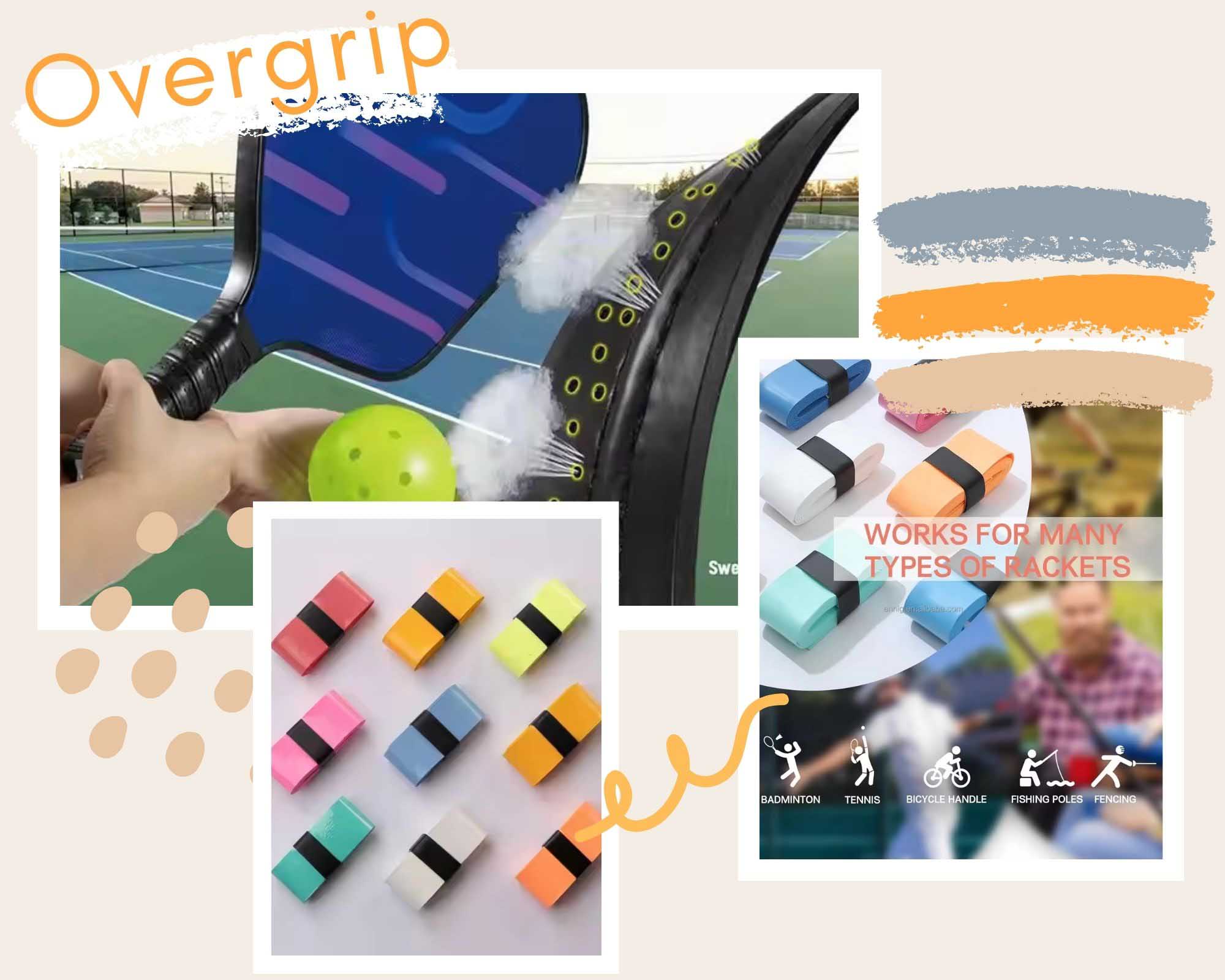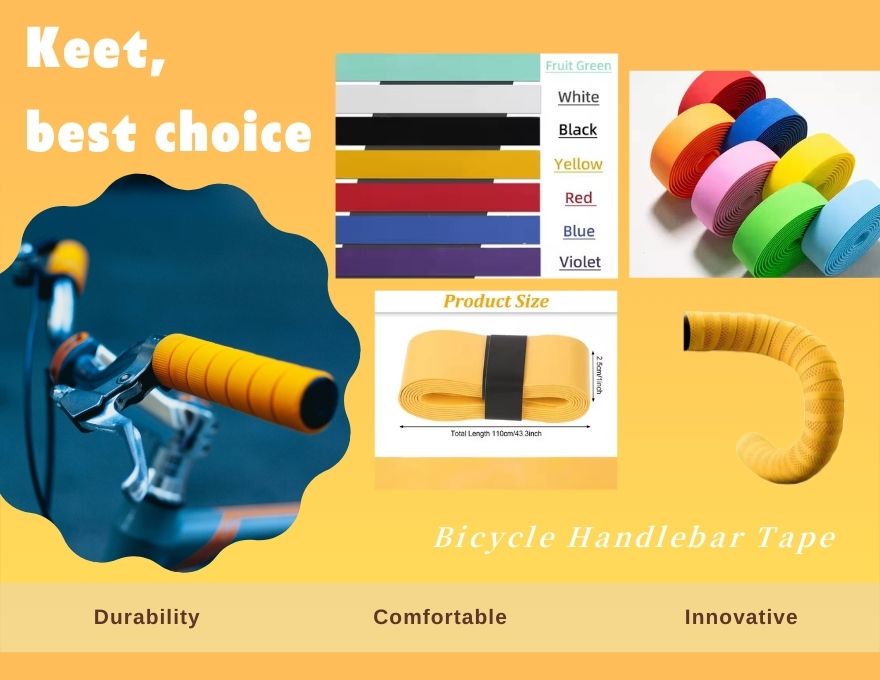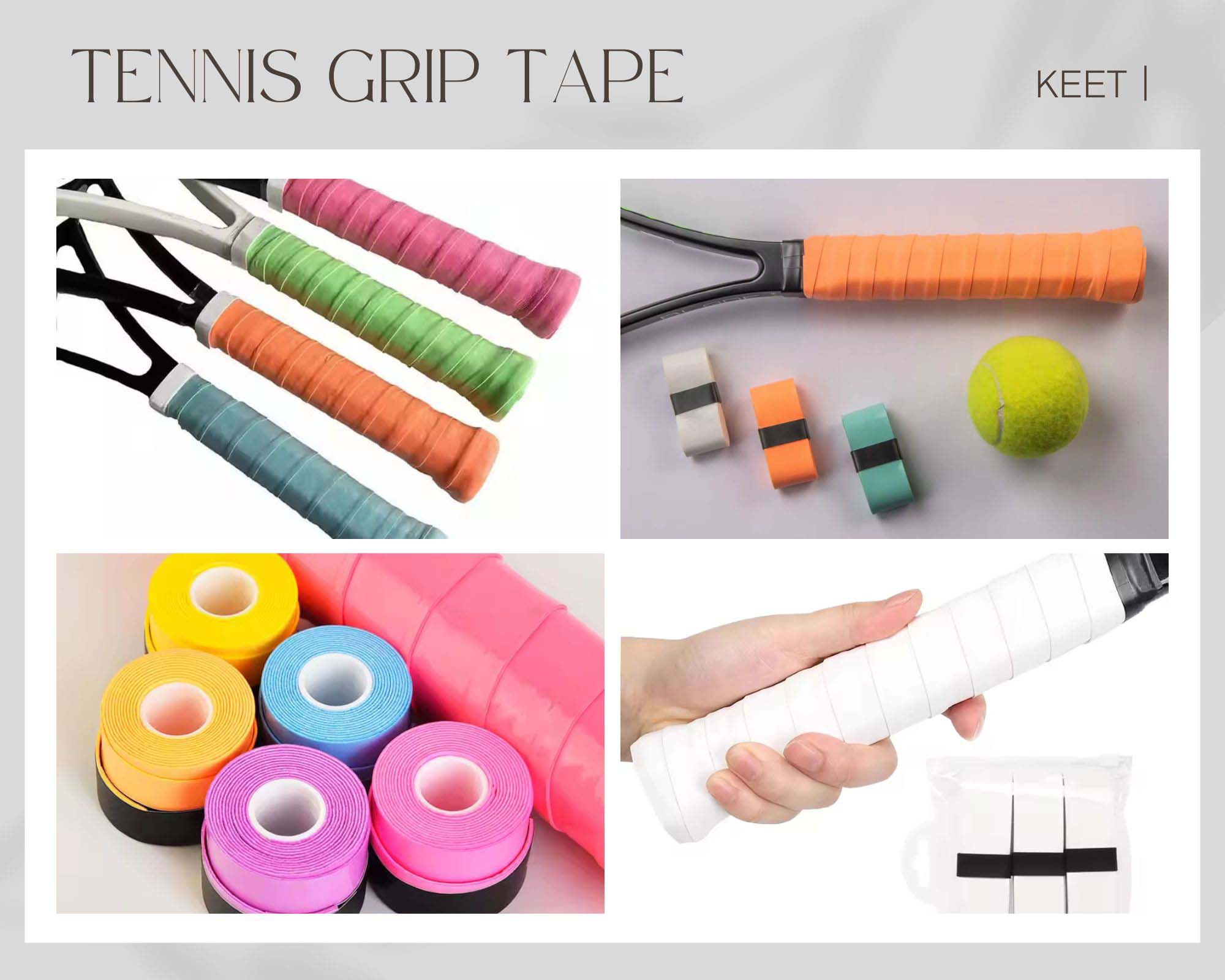In the world of ball games, every aspect of a player's equipment is scrutinized for potential advantages. Among these factors, the bat grip tape, which is often overlooked, plays a crucial role not only in the comfort of hitting the ball, but also has a potential impact on the overall performance of the batsman.
On the one hand, the smooth, safe and comfortable grip tape allows batsmen to more effectively focus their energy into their hands and then transfer it to the racket. On the other hand, an inappropriate or uncomfortable grip can lead to loss of control, decreased racket speed, or even wrist or arm injury due to compensatory movement.
The comfort of overgrip includes factors such as material and thickness. A good racket should be paired with a comfortable overgrip to protect the racket while minimizing slippage and enhancing the sport experience. Now I'm going to introduce four kinds of racket overgrips made of different materials to you.

PU material overgrips are widely popular due to their excellent abrasion resistance, anti-slip properties, and soft, comfortable feel. They are typically thin and flexible, offering a clear tactile sensation while possessing good sweat-absorbing capabilities, which help keep the hands dry. PU overgrips also come in a wide range of colors to cater to the individual needs of different users.
Towel overgrips are usually made of cotton material, resembling towels in appearance and feel. This type of material is highly sweat-absorbent, making it ideal for athletes who tend to sweat easily from their palms. In hot weather or during high-intensity matches, towel hand grips can quickly absorb sweat, preventing the racket from slipping in the hand and providing a stable grip.
Keel overgrips feature a unique "ridge" design, with a raised spine in the middle of the grip. This design is often made of PU or other similar materials but adds support for the fingers. The advantage of keel overgrip is that they provide good support for the fingers, enhancing the stability of the grip, making them particularly suitable for players who like to control the racket precisely with their fingers. However, keel overgrips have a relatively limited range of adaptability, as some players may find the ridge uncomfortable and affect the natural feel of their grip.
Sticky overgrips are mostly made of special rubber or similar materials, characterized by their sticky surface. This stickiness allows for a close fit between the palm and the racket, providing an excellent grip. When hitting the ball, sticky overgrips enable players to control the racket more precisely. However, the stickiness of sticky overgrips gradually diminishes over time due to use and exposure to dust, sweat, etc., requiring regular cleaning and replacement to maintain good performance.
Finally, a comfortable, properly fitted racket grip helps improve control, increase racket speed, reduce the risk of injury, and enhance mental concentration - all of which are key components of effective batting.
In conclusion, the use of different overgrip is different, and customers can purchase according to their needs. Our company provides a variety of colors and styles of overgrip, can also accept customized services. We have high-quality technology and excellent R & D team, to provide customers with professional services, welcome customers to come to consult.







